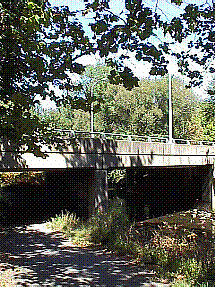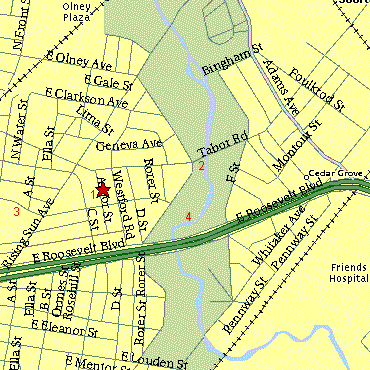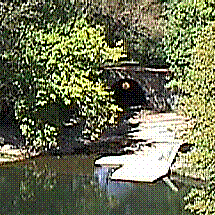philadelphia | 1998 |
|
1998,09.28
Stephen Lauf
1. dies sanguinis
It was throughout the month of April 1998 that I translated all the Latin labels that Piranesi positioned next to the hundreds of building plans within the Ichnographiam Campus Martius, a large map/plan of ancient Rome's Campus Martius "reconstructed". I used E. A. Andrews' A New Latin Dictionary of 1907 (a book about one and a half times the size of Koolhaas' S,M,L,XL) to do the translating, and this exercise proved extremely fruitful because I am now wholly knowledgeable of, if not an expert on, the "program" of every building that Piranesi delineated within the plan that at least one scholar deemed incomprehensible.1
After learning the meanings of over four hundred Latin words, beginning with
abeo
- to go from, to go away, depart
and ending with
xystus
- among the Romans, an open colonnade or portico, or a walk planted with trees, etc., for recreation, conversation, philosophical discussion, etc.,
there is one definition that stands out in my mind more than any other. To my surprise, I found out that the god Mars, for whom the Campus Martius is named, had a sister, and her name was
Bellona
the goddess of war, sister of Mars, whose temple, built by Appius Claudius Caesus in the ninth district of the city, was situated not far from the Circus Flaminius -- a place of assemblage for the Senate for proceedings with persons who were not allowed entrance into the city. Her priests, Bellonarii, and priestesses were accustomed, in their mystic festivals, especially on the 20th of March, (hence dies sanguinis), to gash their arms and shoulders with knives, and thus offer their blood.
No doubt, Bellona's strangest attribute is the requirement of "honorific" blood from her priesthood's self-inflicted wounds, yet, for me personally, the most striking feature of this obscure bit of information is the dies sanguinis and its specific date -- the 20th of March is my birthday.2 I always enjoyed celebrating my birthday on the same day that Spring begins in the northern hemisphere, but I never imagined the same day was once observed as the day of blood. Upon reflection, however, news of the dies sanguinis in April 1998 came one year and one month late, because where I live the 20th of March 1997 certainly was a day of blood.3
2. I was born 6:52 am 20 March 1956 in the old Osteopathic Hospital of North Philadelphia. Spring began at 10:46 am that year.
I spent most of my 41st birthday alone working at home, much like any other day. For dinner, I was going to my parents, especially to be with my father who was ill and bedridden having by this point lost both his lower legs due to diabetes and its complications.4 The drive from my house to Philadelphia's Fox Chase neighborhood where my parents live takes about fifteen minutes. When traveling there during evening rush hour, I take Tabor Road as an alternative to my regular route of Rising Sun Avenue -- the nearby intersection of Rising Sun and Adams Avenues is notorious for its near gridlock conditions between 3:30 and 6:30 pm. Tabor Road crosses over Tacony Creek a few blocks east of my house, and that evening several police vehicles along with the yellow ribbons police now use to "rope off" crime scenes were on the bridge. Obviously something serious had occurred very recently. I arrived at my parents house just as the local television news began, and I was shocked and dismayed to hear that "the big story on Action News" was the murder of a 49 year old nurse in Tacony Creek under the Tabor Road bridge.
4. I was fairly certain my father and I would be spending my birthday together for the last time. My father, Otto Lauf, died the 24th of September 1997.
1. 5233 Arbor Street |
The details of this murder are gruesome, and the series of events involving the crime are especially unsettling. On the 19th of March, Calma M. Calida left her home (location 3 on the above map) at 11 pm by car heading for work several miles away at the Philadelphia Geriatric Center. In the Geriatric Center's parking lot she was abducted and carjacked by two male teenagers whose sole purpose that evening was to steal a car. For no specific reason, the assailants drove Ms. Calida with her car to the Tabor Road bridge over Tacony Creek, which is just blocks from Ms. Calida's home. Under the bridge, one of the assailants raped and murdered Ms. Calida while the other assailant watched on. Ms. Calida died from repeated rock blows to the head, and her body was found in the creek approximately 12:15 am March 20th.
Since 1990, Tacony Creek Park has become the periodic dumping ground for decapitated animal carcasses, including those of goats and birds. Often found with other articles such as dolls, the dead animals appear to have been part of a ritualistic slaughter. Originally, the rituals themselves were thought to be held within the park, but at least one eyewitness account attests to the carcasses being dumped, thus suggesting the rituals occurring elsewhere. Nevertheless, the juxtaposition of animal sacrifices and the park of a modern American city at the end of the twentieth century is something unanticipated to say the least. Moreover, one cannot help but wonder why animal carcasses are brought repeatedly to the same general area. Is it possible that Tacony Creek Park, especially the area between Roosevelt Boulevard and Rising Sun Avenue, possesses a physical or even metaphysical attraction for ritualistic death related activity? Of course, such a question will never receive a completely satisfactory resolution, and, besides, the hubris of Western Enlightenment and the scientific method even precludes the "rational" asking of such a question.
excerpt from
For what it's worth, I have my own Tacony Creek Park story regarding "sacrifice" and "death". After any snow storm, Tacony Creek Park becomes a great place for sledding. There was such a storm sometime in early January 1960 or 1961. As usual, all the children from the park's adjacent neighborhoods converged on a special set of hills surrounding a huge storm water run-off tunnel that feeds into the creek (location 4 on the above map). Being only four or five years old, I did not have a sled, but I was taken to the park with a group of other children my age under the supervision of a neighbor girl, who, most likely, was not more than ten years old herself. Standing with my group on the earth covered ridge created by the tunnel, I remember being extremely gleeful at beholding all the activity -- there was lots of noise, children all over the place, sleds going in every direction, and even a bonfire of Christmas trees down in the concrete ravine at the tunnel's mouth. Suddenly, I was grabbed by an older boy, who carried me over to the railing around the top of the tunnel, and then held me in the air about twenty feet over the burning trees. He threatened to drop me unless I promised "to never do that again." I told him I didn't do anything, then looked over to my group who were standing there with dumbfounded looks on the faces, and then looked down into the fire thinking I might survive the fall, but why oh why did there have to be burning trees down there as well. The boy again threatened to drop me, and this time I screamed "I'll never do it again!" Almost as quickly as he picked me up, the boy put me back down on the ground. I later learned that my assailant was the local "tough guy", and thus I was probably just a victim of one of his many random pranks. Nevertheless, because of this experience, I can honestly say that I know exactly what it is like to be a "kid" held in the air over open flames.
My favorite component of the architectural design process has always been the initial site visit and the subsequent site analysis for the project at hand, and I now know why I like this aspect of design as much as I do. Simply put, it brings out my sanguine sagaciousness.
|
www.quondam.com/39/3998g.htm | Quondam © 2020.06.29 |




